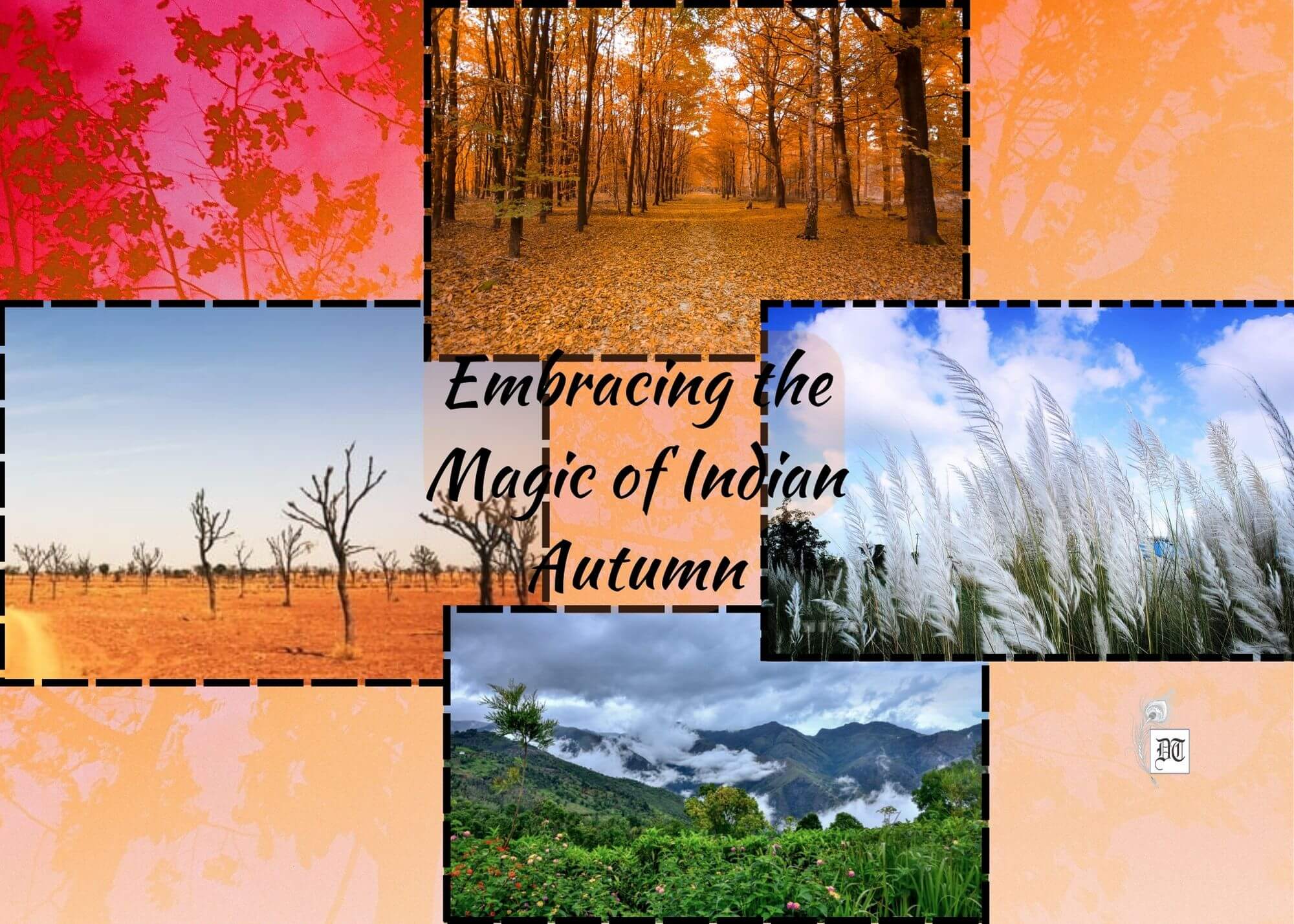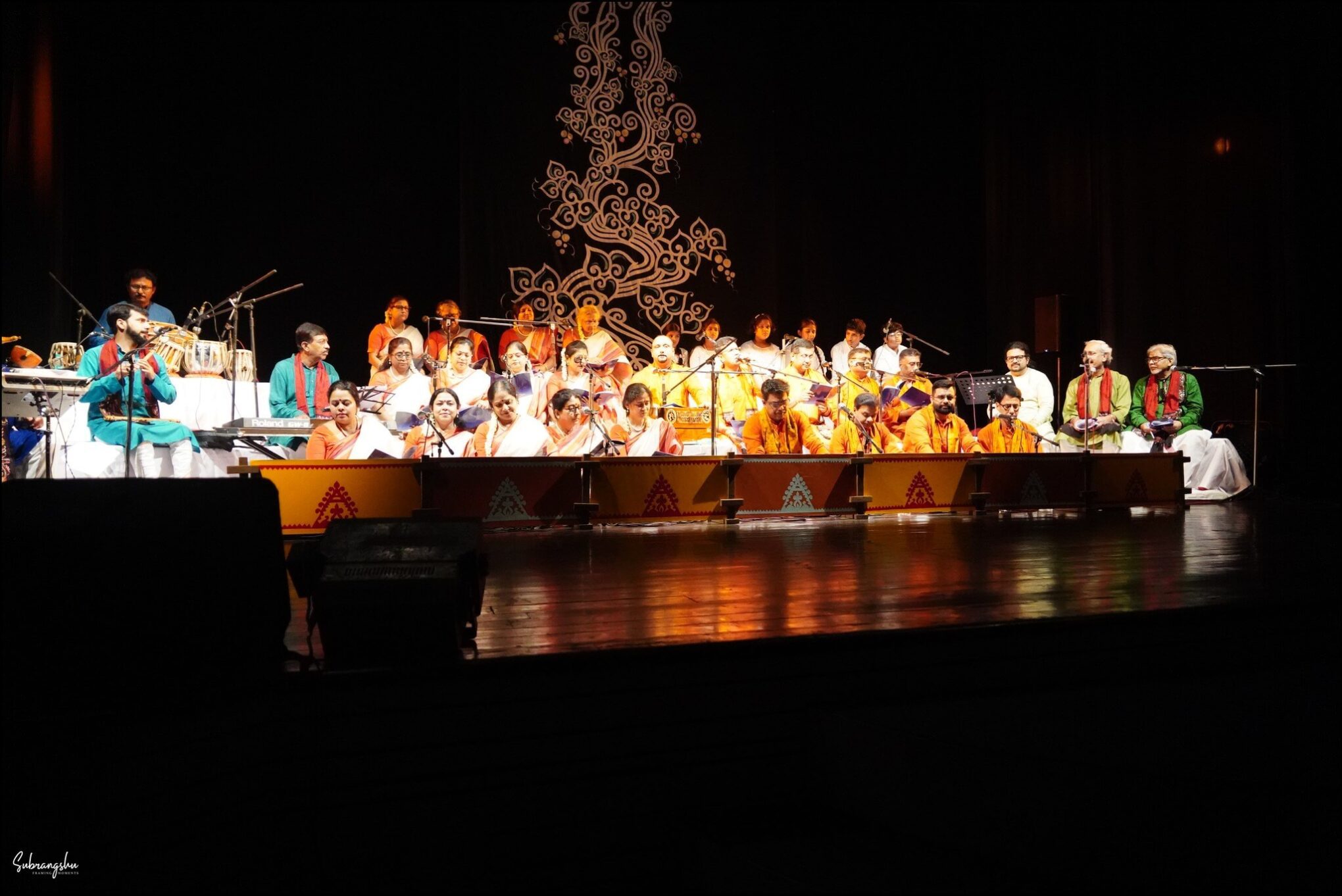Experience the enchanting diversity of autumn in India, from the vivacious colours of Bengal’s Sharat to the tranquil majesty of Jammu & Kashmir, with Ruchira, exclusively for Different Truths.

My favourite season of all has always been autumn. Not sure why, but that’s the way it has been all along. The legendary British poet John Keats aptly described it as “Season 9- of mists and mellow fruitfulness.” However, this lucid description is not quite compatible with the kind of autumn that we experience here in India. For one, Keats’ native land, Britain, is in an altogether different geographical region and experiences a distinctly different set of temperatures all through the year. And secondly, the vast expanse of landmass of our country comprises distinctive geographical zones. Quite naturally autumn in the divergent areas has its unique features.
For instance, Autumn or Fall in the northernmost state of Jammu & Kashmir is characterised by deciduous trees such as Maple (Chinar), Poplar, Willow, and more, shedding dried leaves (tinged with myriad hues). In case you happen to be walking through streets, lanes, or forest glades, draped with piles of fallen leaves, and hear a unique sound (your boots crushing them underfoot) you will agree it is a different kind of experience altogether!
Since the Thar desert tracks and surrounding areas have sparse vegetation, the onset of autumn is not perceptible…
Since the Thar desert tracks and surrounding areas have sparse vegetation, the onset of autumn is not perceptible as such. Likewise, the vast tracts of land covered by tropical evergreen forests e.g., Southern states and the northeast in particular, miss out on the joys of the advent of autumn.
Even at the risk of sounding provincial and a tad conceited I feel it is the Bengalis who lap up the joys of autumn to the hilt.
Come September (Aashwin as per the indigenous calendar) “Bangla” (on both sides of the fence gets transmogrified into a vivacious, vibrant object of beauty. The skies suddenly turn a translucent, brilliant blue, the dirt and dust having been wiped away by deluges of Monsoon showers. A vast sunlit canvas often appears studded with clumps of milky white cumulus clouds that heighten the visual appeal of the scenario.
Hundreds of miles below, on the terra firma, sunlight and shadows play hide and seek amidst the undulating fields of ripening paddy.
Hundreds of miles below, on the terra firma, sunlight and shadows play hide and seek amidst the undulating fields of ripening paddy. When the immaculate white kashphool (a plant of ‘rice’ species flourishing only during autumn) bursts into glory, lasting just about a couple of months, it is thrilling to behold. Symbolically, they reflect the intransient nature of human life.
There exists a rich anthology of autumn season/nature poems and lyrics penned by legendary poets like Tagore and Jibanananda Das that are too familiar to be reiterated here. Another outstanding feature of Bengal’s autumn (lit: Sharat merging into Hemanta, the lines often blurred) is the short-lived blooming of Chhatim phool (Devil’s tree) a tree characterised by rich, glossy green leaves arranged in whorls of seven. They were lovingly Christened Saptaparni by Tagore. They still grow abundantly in and around Santiniketan – a whiff of nostalgia for the departed soul! The flowers (inflorescence actually) emit such a strong overpowering fragrance that in case you are ambling anywhere near a single tree or grove, don’t be surprised if you find yourself slipping into a trance-like state.
… we mortals owe profound gratitude to the Divine Mother for judiciously picking this balmy fragrant season for her annual earthly vacation.
Concluding in a comical vein: we mortals owe profound gratitude to the Divine Mother for judiciously picking this balmy fragrant season for her annual earthly vacation. Let’s face it, in any other season undertaking such a long journey from snowy Kailash, saddled with her brats, would be a horrific one. As for humans, nobody wants to celebrate in scorching heat with rivulets of sweat all over them.
Picture design by Anumita Roy






 By
By


 By
By